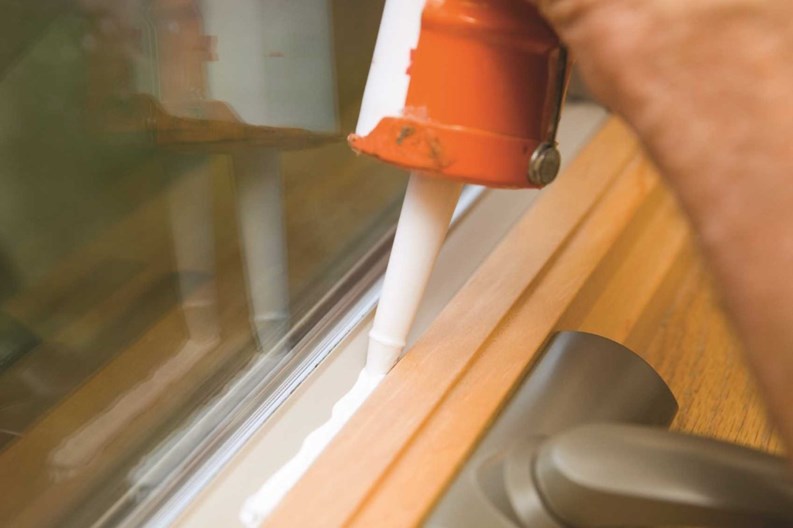Next to fire, perhaps nothing is more damaging to residential buildings and their occupants' property then leaks. Whether it’s a torrential deluge from the upstairs neighbor’s overflowing bathtub or a slow, seeping leak around the window frames, water causes huge amounts of physical damage, and can contribute to the proliferation of mold—and all the potential health hazards that represents.
And though building boards never enjoy addressing the perennial problem of weatherproofing, seasonal reviews allow unit owners and board members to catch small maintenance items before they become major repair bills.
That’s why it’s vital for buildings to make sure their structure is as waterproofed as it can possibly be, and that any breaches in their building envelope are dealt with swiftly and competently.
“A building envelope is the outside protection of the building,” says Joseph Caggiano, president of RCD Restoration in the Bronx. “A building has a structural frame, whether it’s steel or concrete, and the curtain wall is either masonry or metal or a concrete façade which protects the inner spaces of the building.”
Building wrap is generally installed prior to the building’s exterior façade and helps protect against air and water infiltration while allowing harmful moisture vapor to escape the wall cavity. Building wraps can hold up to the rigors of residential job sites because of its increased tear strength, durability and ability to withstand extended UV exposure. Certain building wraps may contribute towards U.S. Green Building Council LEED points.
The Main Culprits
Experts agree that any part of a building exposed to the elements is prone to wear-and-tear and has the potential to be an entry point for moisture and water intrusion.
“Most of the time, the most vulnerable spots to water damage is the window openings and door openings,” observes Caggiano. “The roof areas and parapet walls are also vulnerable. The parapet wall is the wall that extends up past the façade level—when you’re up on a roof it usually extends up anywhere from three to four feet above roof level.”
“Without a doubt, the roof is the most vulnerable spot to water damage,” says Chris Yacono, vice president of Artisan Restoration Group in New York City. “Most issues with roofs are the base flashings and the main thing is roof penetration and roof drains.”
“Elevator rooms, roof terraces and balconies are also spots that are prone to water damage,” adds Tony Malatos of KNS Building Restoration Inc. in Middle Village. “So it’s a good idea to keep an eye on those spots.”
Weather, poor construction, building age and human error can also cause a building to develop leaks. Old and new buildings are both susceptible to water damage Shoddy construction on newer buildings can lead to a leaky façade and older buildings have more than likely experienced damage due to numerous years of exposure to the elements.
Seepage and water damage aren’t strictly above ground problems. A common area in which buildings experience leaks is the foundation, because cracks often occur in the foundation wall, says Malatos.
In fact, say experts, ventilation is a key factor in nearly all areas of condo construction—including often overlooked basement and wall cavities, so it is mandatory that the wall below ground level is sealed to prevent the entrance of moisture. Structural waterproofing is the term used to describe when a wall below ground level is sealed to prevent the admission of moisture. With below-ground conversions various structural pressures can complicate things. That’s why all possibilities have to be reviewed by a professional surveyor before action is taken.
An Issue of Ownership
Most co-op and condominium bylaws are written in such a way as to stipulate that the window belongs to the unit owner but the structure or frame around the window belongs to the building board or association. So weatherproofing buildings can be a tricky proposition when one considers the unique challenges building boards and associations often face with door and window replacement.
“In co-ops and condos, it has to be a board decision,” says Caggiano. “There is a board of directors and they decide if the work is done on an individual basis or a project to cover the entire building.”
In addition to the unique ownership issues of door and window replacement, unit owners will eventually realize that it’s also difficult to address a roofing issue without addressing siding, and at some point may have to consider integrating the projects together.
“Every building is different and every situation varies,” says Yacono. “If you need windows, you can do a window project unto itself. If your roof is in bad shape, you can replace the roof by itself. But if you have an engineer do an inspection and he found hazardous or bad conditions throughout your building and your roof was bad, you’d combine those two together.”
“I believe it’s best to integrate all projects together,” says Caggiano. “If there’s issues with the roof or windows and the doors, it’s better to just put it together in one package. If you did it individually it would probably cost more. Say you have a contractor come in and replace a door, that same contractor has general conditions and mobilization and scaffolding costs. If you did it on an individual basis those costs would add up, the general condition cost would be a lot higher than if you just did it one time with one contractor.”
Identifying Problems
It is better to head off problems before they start, so waterproofing and weatherproofing experts recommends setting up a maintenance plan to deal with leaks and repairs before they occur and before they get out of hand.
“What happens is if the building is experiencing a lot of leaks, they will either call in an engineer or an architect who evaluates the problems and puts together a specification to perform the repairs and a maintenance plan,” says Caggiano. “It could be brick pointing, it could be caulking windows, it could be rebuilding parapet walls, it could be replacing the roof. That’s always put together by a professional. They’ll usually have elevation drawings.
In addition to leaks, there are some telltale signs that a building is having waterproofing and weatherproofing problems.
“One of the first signs of waterproofing problems is that on the exterior of the building there will be brick or water deterioration and cracking,” says Malatos. “As far as the interior goes you’ll see staining of plaster and bubbling of paint.”
”Waterproofing must be done from the outside. Inside you’re not stopping the water from entering you’re just covering it up,” says Yacono. “So if you have a leak in the basement that means you might have to excavate the dirt, the sidewalk. A leak coming from above means you’ll have to take a look at the roof. Waterproofing issues aren’t always from top to bottom. It varies on the construction of the building. I’ve worked on 15-story buildings and they’ll get a leak on the sixth floor, right in the middle, a spot leak.”
Despite its appearance as an external weather barrier, experts say even the most modern siding materials were not designed as complete protection against moisture. Whether windows, roofing or siding, when the time does come to discuss large scale updating, money worries often affect association decision-making—a problem that may seem even more daunting in a down economy.
There are various ways waterproofers identify problem areas if leaks are not glaringly obvious.
Additionally, leak hunters will simulate heavy rainfall, use small digital cameras similar to what a cardiologist or plumber uses and infrared moisture detectors that supply an x-ray of any flat surface where moisture may be trapped. You can also use a moisture meter, which can be bought in any local hardware store.
In the end, say the experts, talk about weatherproofing with your contractors and management team in a reasonable manner. Then have an open conversation with your residents at board meetings and remember to keep them informed with newsletter updates so that they can monitor the ongoing project.
Matthew Worley is a freelance writer and a frequent contributor to The Cooperator. Staff Writer Christy Smith-Sloman contributed to this article.










Leave a Comment